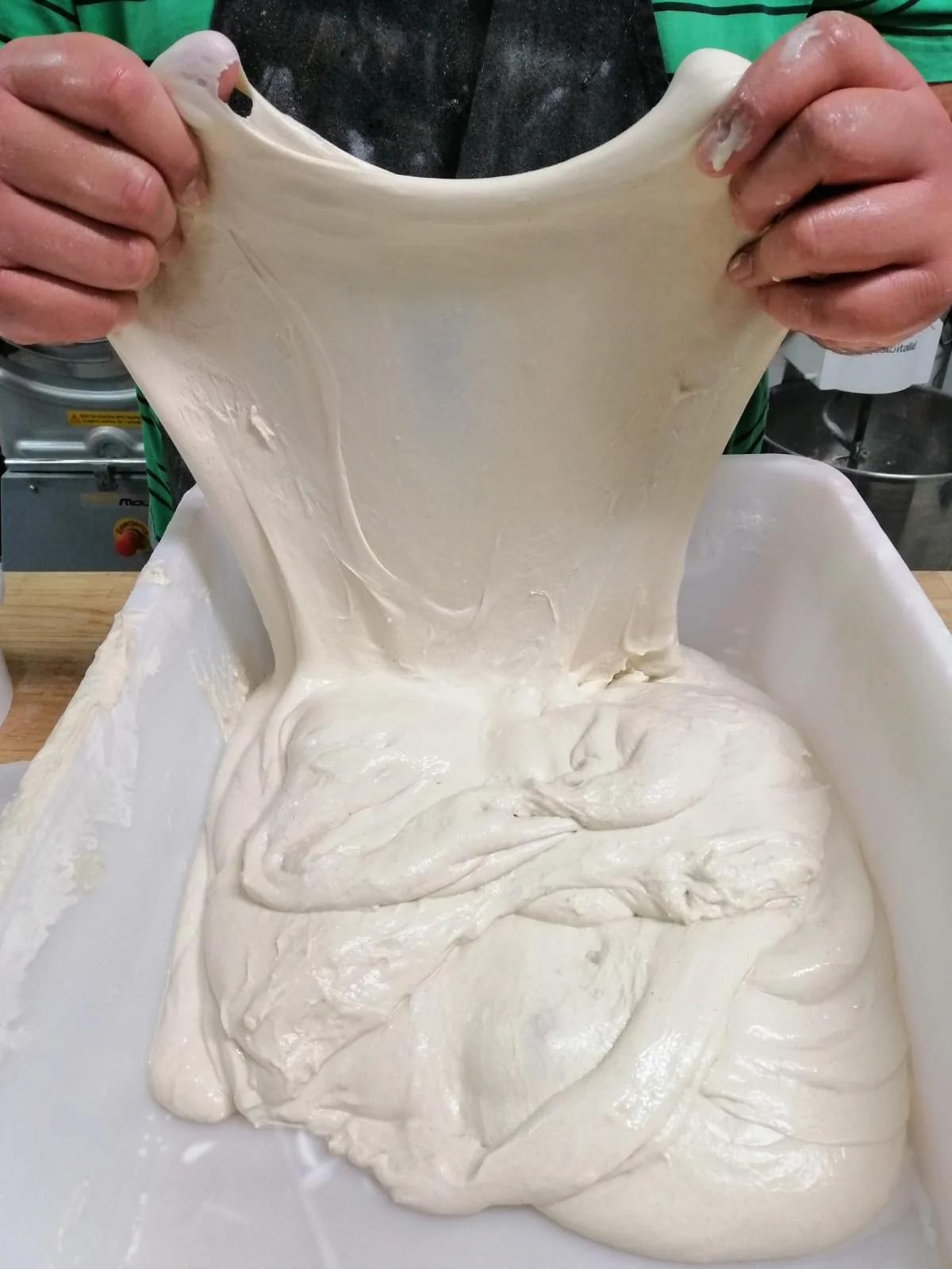Gluten is found in rye, barley, and especially wheat. It is used as an additive in many unexpected foods in the supermarket and has had a fair bit of (mostly bad) press in recent years. Pretty much everyone has heard of gluten, but do you know what gluten is and what work it does inside bread?
Basically gluten gives bread its structure. Without it, you get crackers or a brick of some sort. (Gluten is also degraded in a baked sourdough, because the fermentation process breaks it down!) Stephen Yafa explains the work of gluten:
“Gluten, which provides food storage for the germinating seed, is actually a complex comprised of two amino-acid proteins, gliadin and glutenin, that bond to form long, tangled molecules. Its stickiness - gluten comes from the Latin word for “glue” - adds elasticity and extensibility to wheat flour when mixed with water. The cohesion enables kneaded dough to stretch and hold its shape, a delicate compromise between strength and flexibility that gluten alone provides.
Bakers, for that reason, depend on gluten to create structure and resilience in their bread doughs. With the addition of water, this amino-acid bead string produces a web matrix of dough, the crumb. Carbon dioxide, the escaping gas released as a yeast by-product, fills the air pockets - named alveoli, like the lung’s balloon-like structures. That causes the crumb to swell inside the rising crust as it bakes.” (Ref: pp.10-11 Stephen Yafa (2015) Grain of Truth: The real case for and against wheat and gluten. Avery, Penguin Random House: New York

